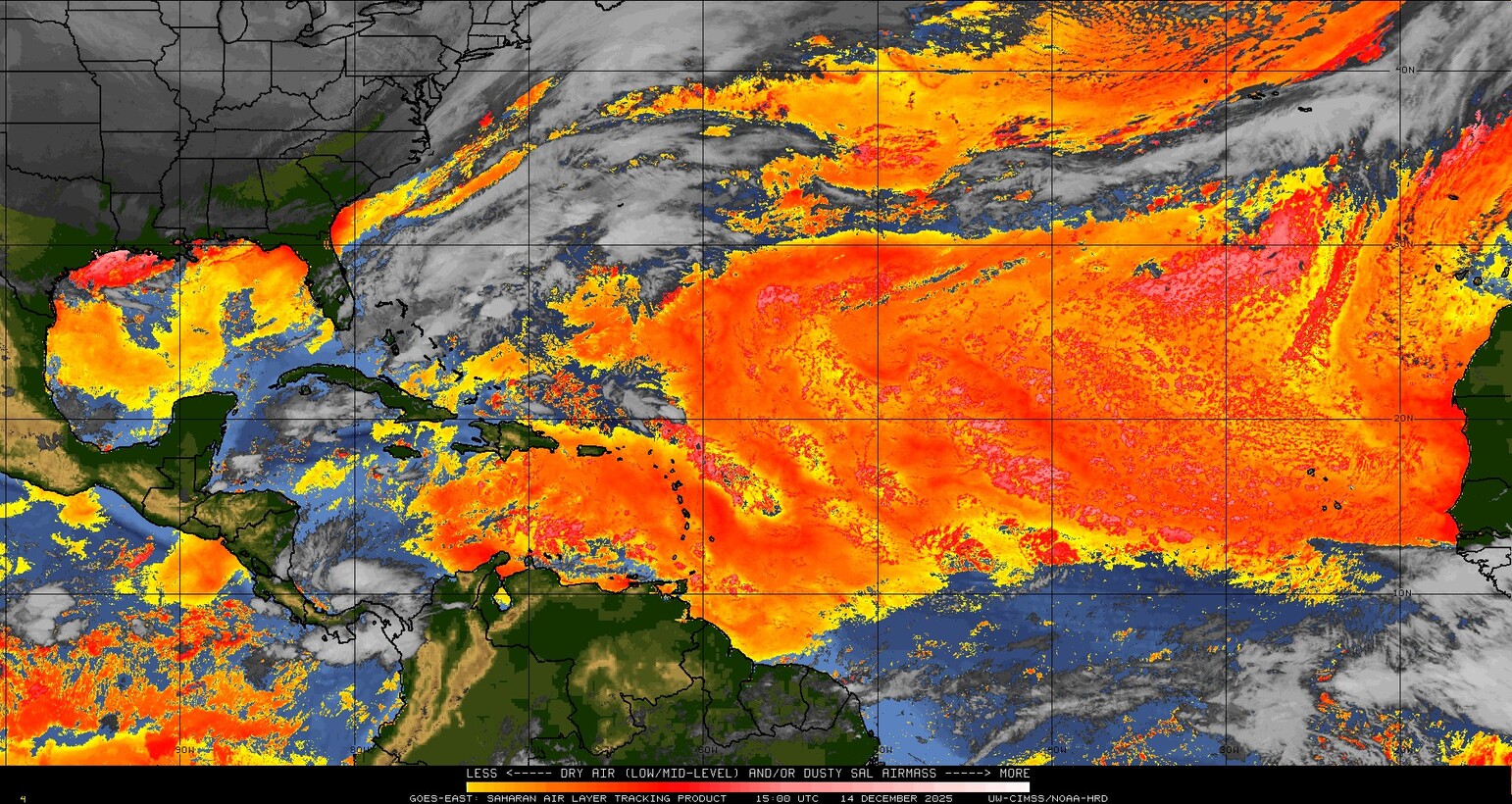Saharan Dust
Sources: NOAA, MyFoxHurricane.com, Cooperative Institute for Meteorological Satellite Studies / University of Wisconsin-Madison, NOAA, The Weather Channel
In addition to hurricane-favorable conditions such as temperature and humidity, many repeating atmospheric phenomenon contribute to causing and intensifying tropical cyclones. For example, African Easterly Waves (AEW) are winds in the lower troposphere (ocean surface to 3 miles above) that originate and travel from Africa at speeds of about 3-mph westward as a result of the African Easterly Jet which moves from east to west across the continent into the tropical Atlantic Ocean. These winds are seen from April until November. About 85% of intense hurricanes and about 60% of smaller storms have their origin in African Easterly Waves.
The Saharan Air Layer (SAL) is another significant seeding phenomenon affecting tropical storms. It is a mass of dry, mineral-rich, dusty air that forms over the Sahara from late spring to early fall and moves over the tropical North Atlantic every 3-5 days at speeds of 22-55mph (10-25 meters per second). These air masses are 1-2 miles deep and exist in the lower troposphere. They can be as wide as the continental US and have significant moderating impacts on tropical cyclone intensity and formation because the dry, intense air can deprive the storm of moisture and wind shear can interfere with its convection.
Saharan Dust or the Saharan Air Layer (SAL) often acts to inhibit tropical development. SAL outbreaks can form when ripples in the lower-to-middle atmosphere, called tropical waves, track along the southern edge of the Sahara Desert and loft vast amounts of dust into the atmosphere. Once a pocket a Saharan Dust begins moving westward over the Atlantic, it is relatively easy to track using infrared satellite products.

SAL outbreaks occur from the late spring through early fall and cover extensive portions of the North Atlantic between the Sahara Desert, the West Indies and the United States (e.g., Florida and Texas). SAL activity (described by the size and westward reach of the outbreaks) begins to rapidly increase in early June, peaks from mid-June through late July, and begins to subside in early August. The figure below shows the mean occurrences of moist tropical (MT), SAL, and midlatitude dry air intrusion (MLDAI) soundings in the Caribbean region from June to October. During the summer, the SAL affects ~40% of all Caribbean rawinsonde soundings and on average, over 20% of soundings during the peak months of the hurricane season (July-October, see figure legend).

Each year, some 800 million metric tons of desert dust blow up from North Africa and become the largest source of airborne dust particles on the planet, according to NASA.




